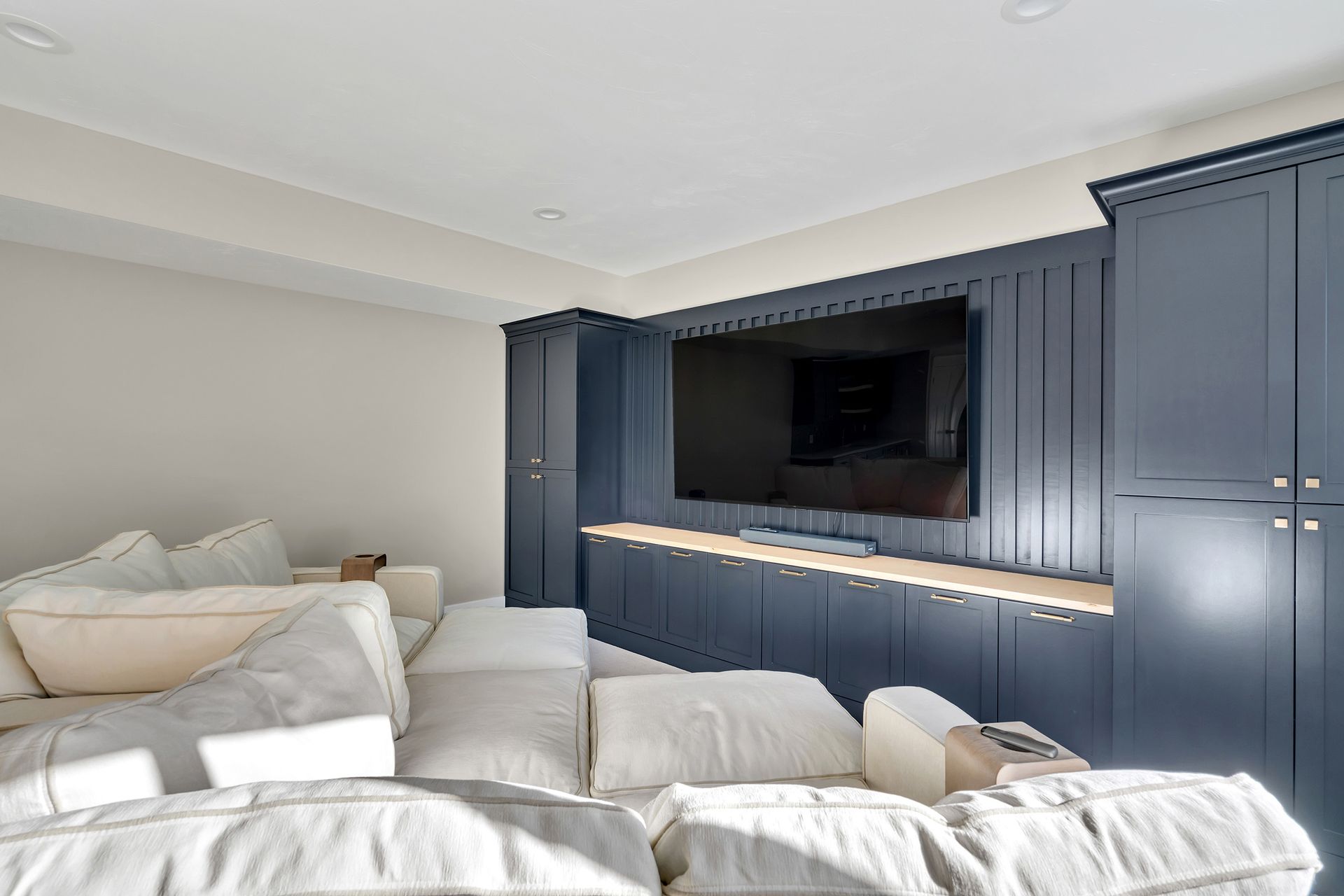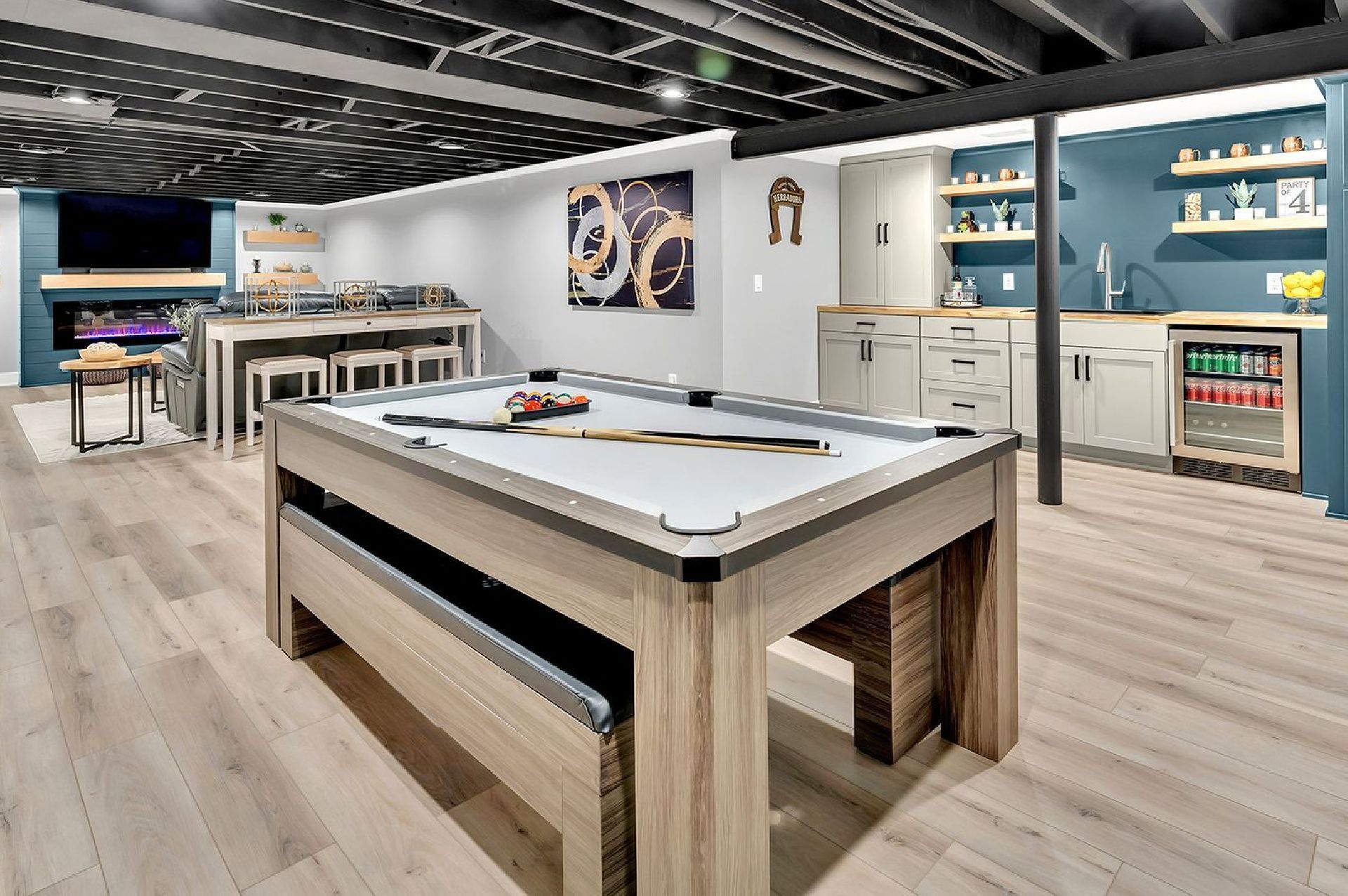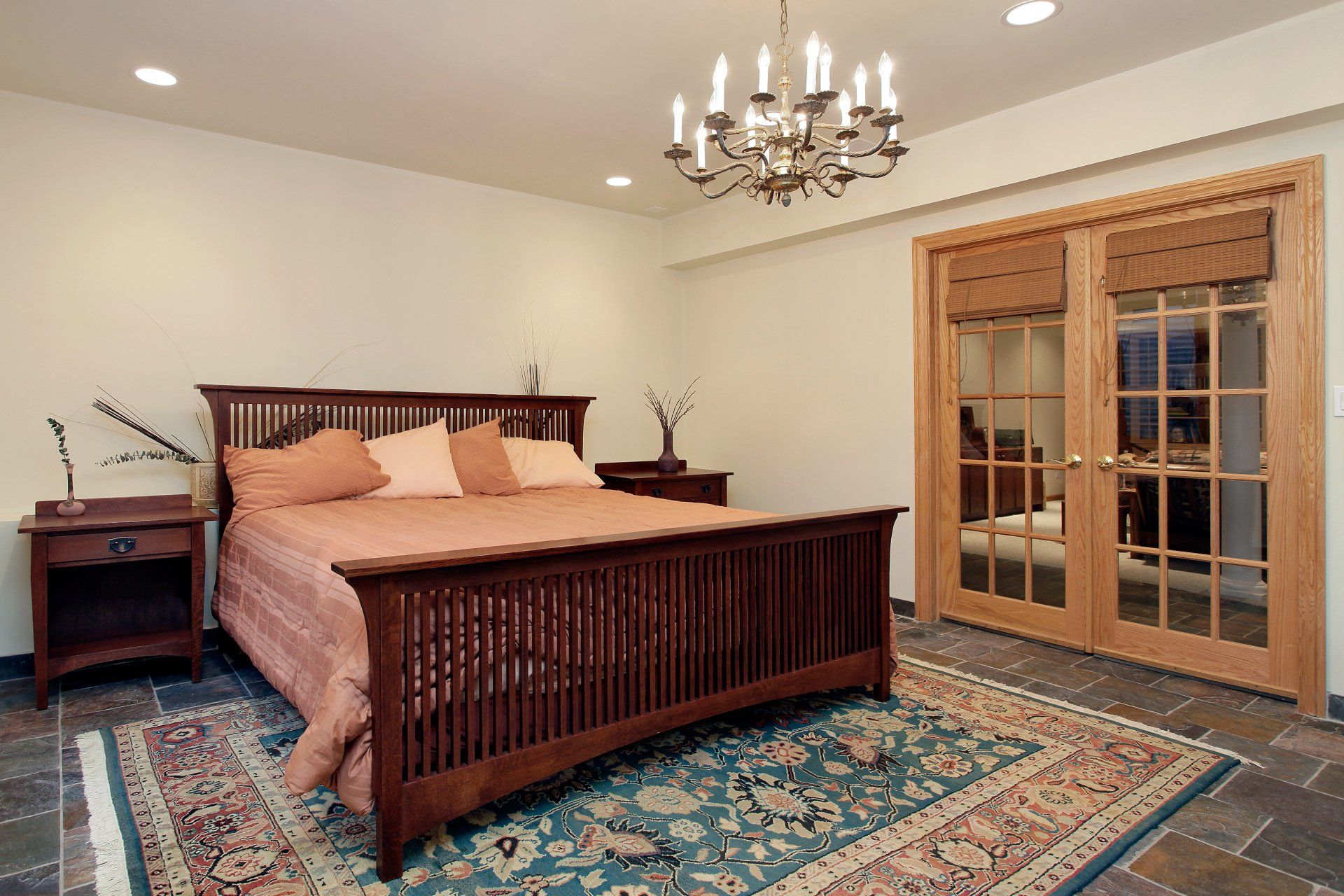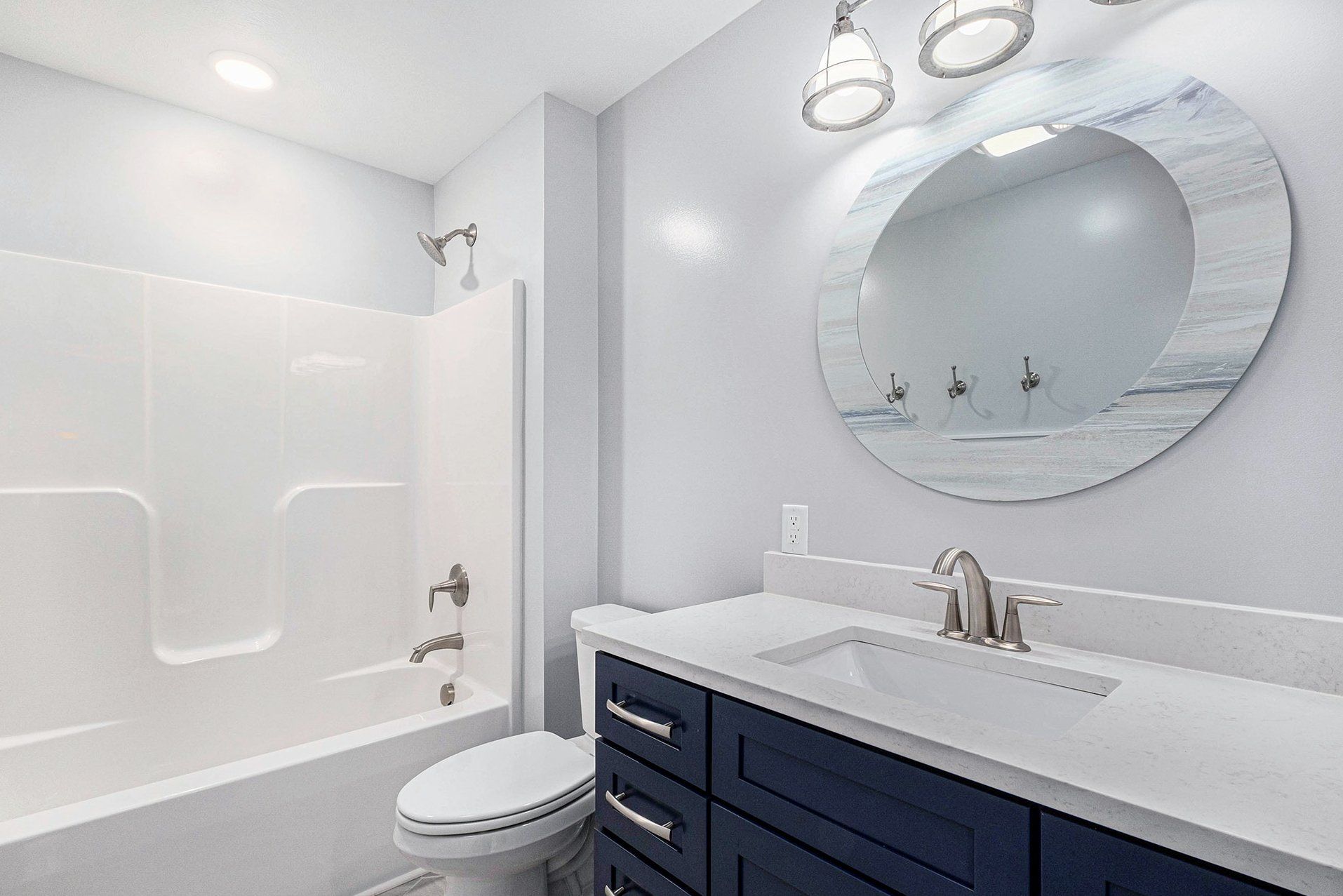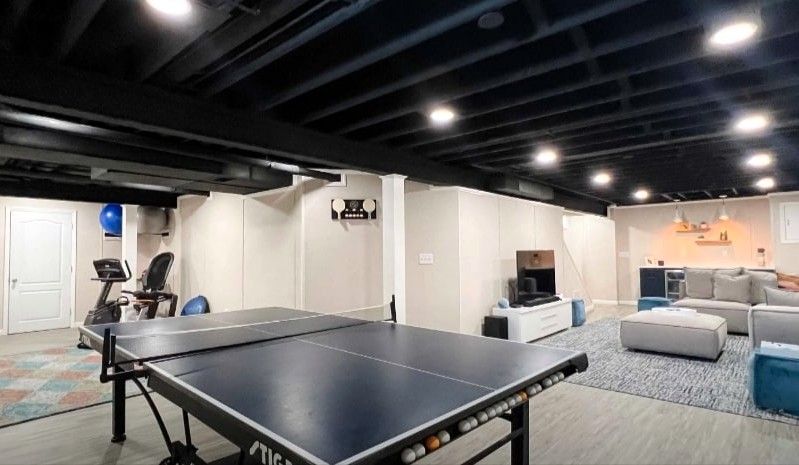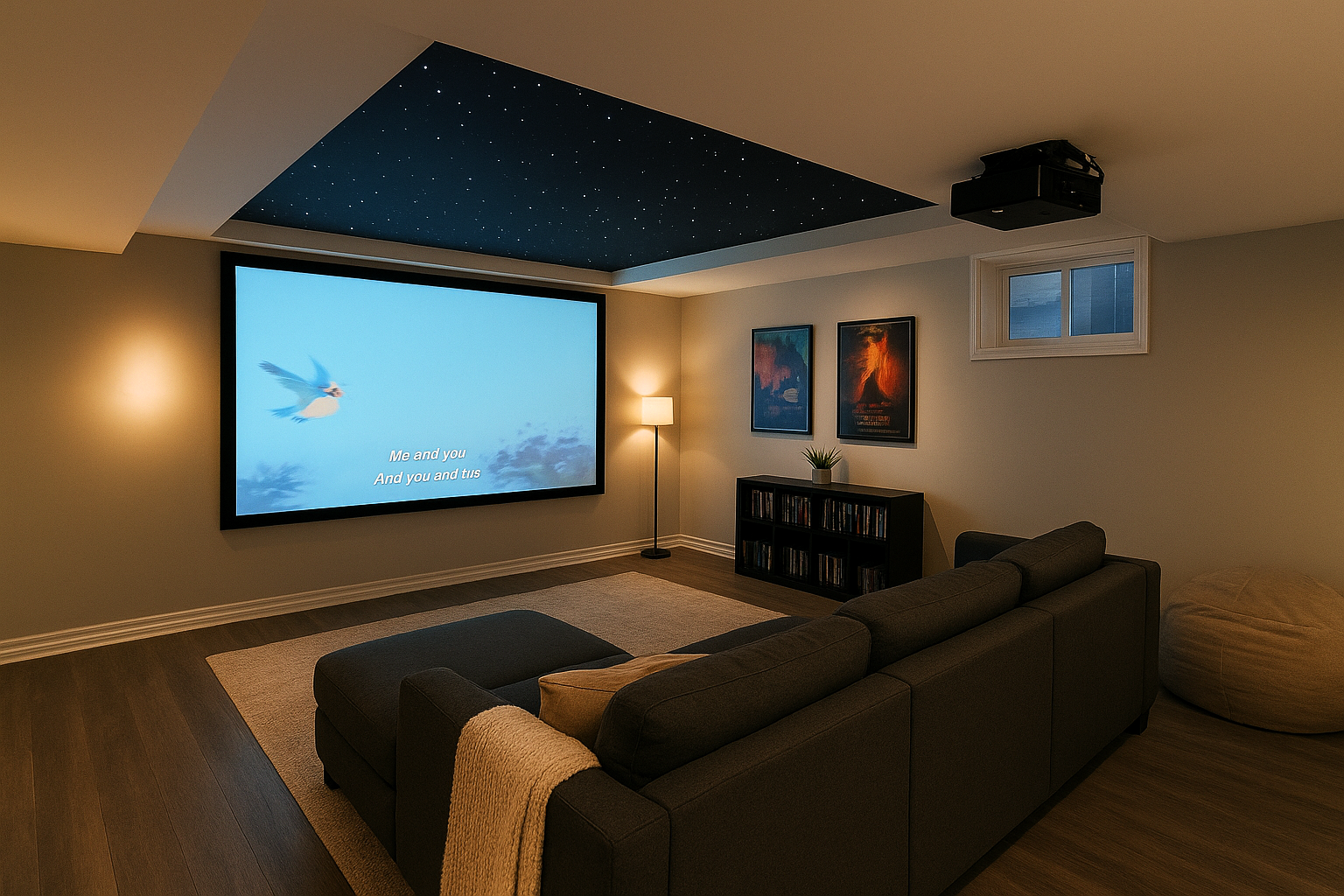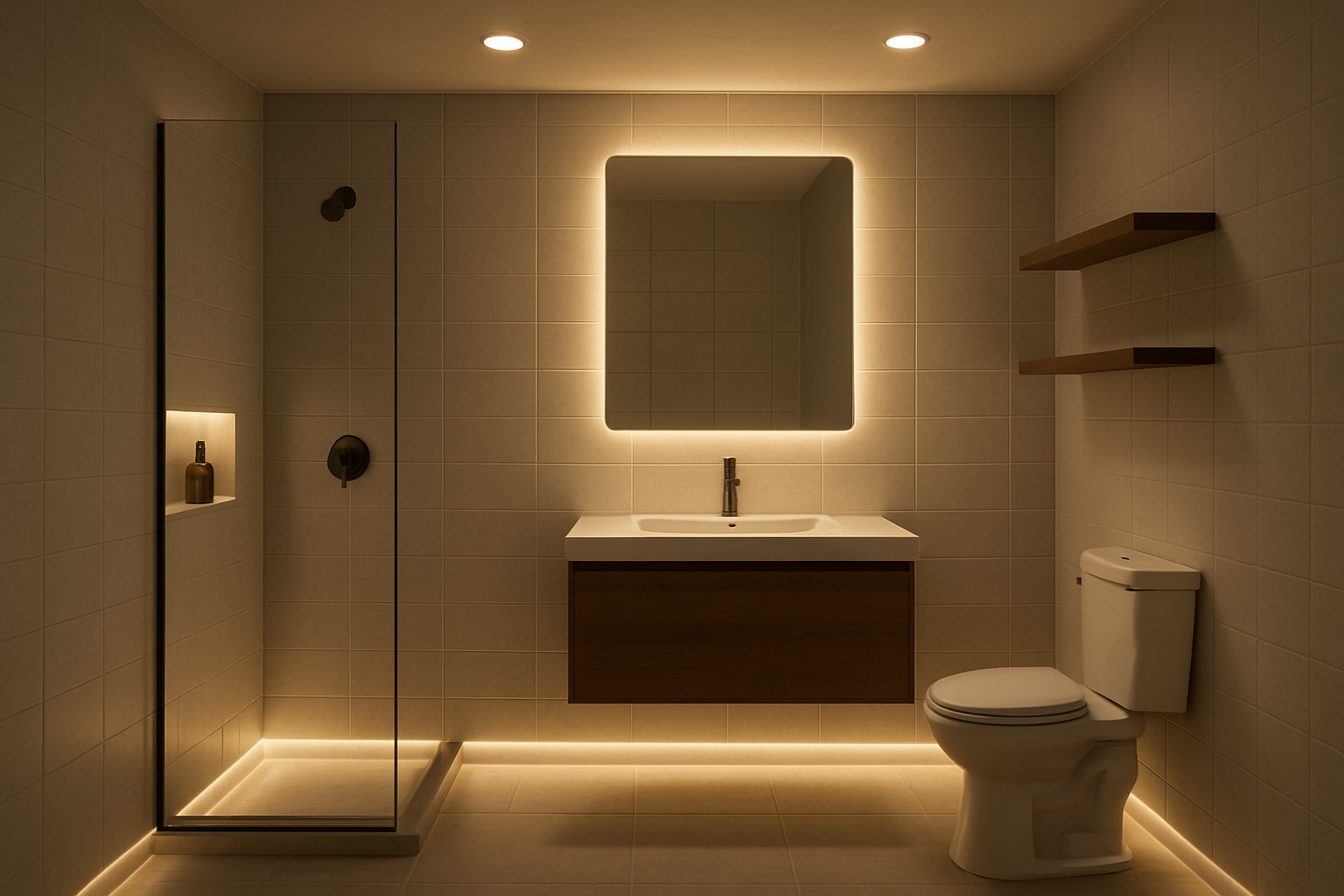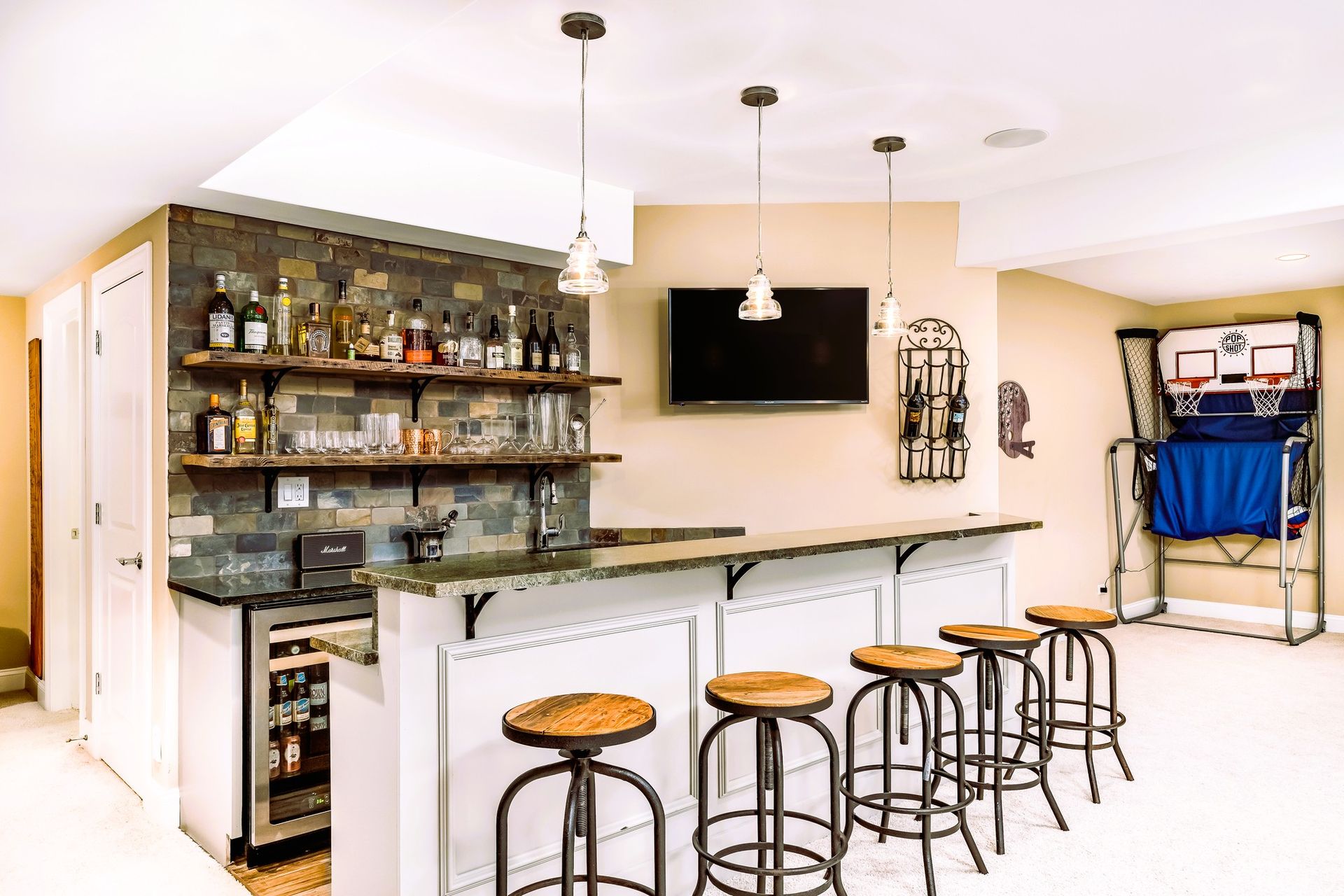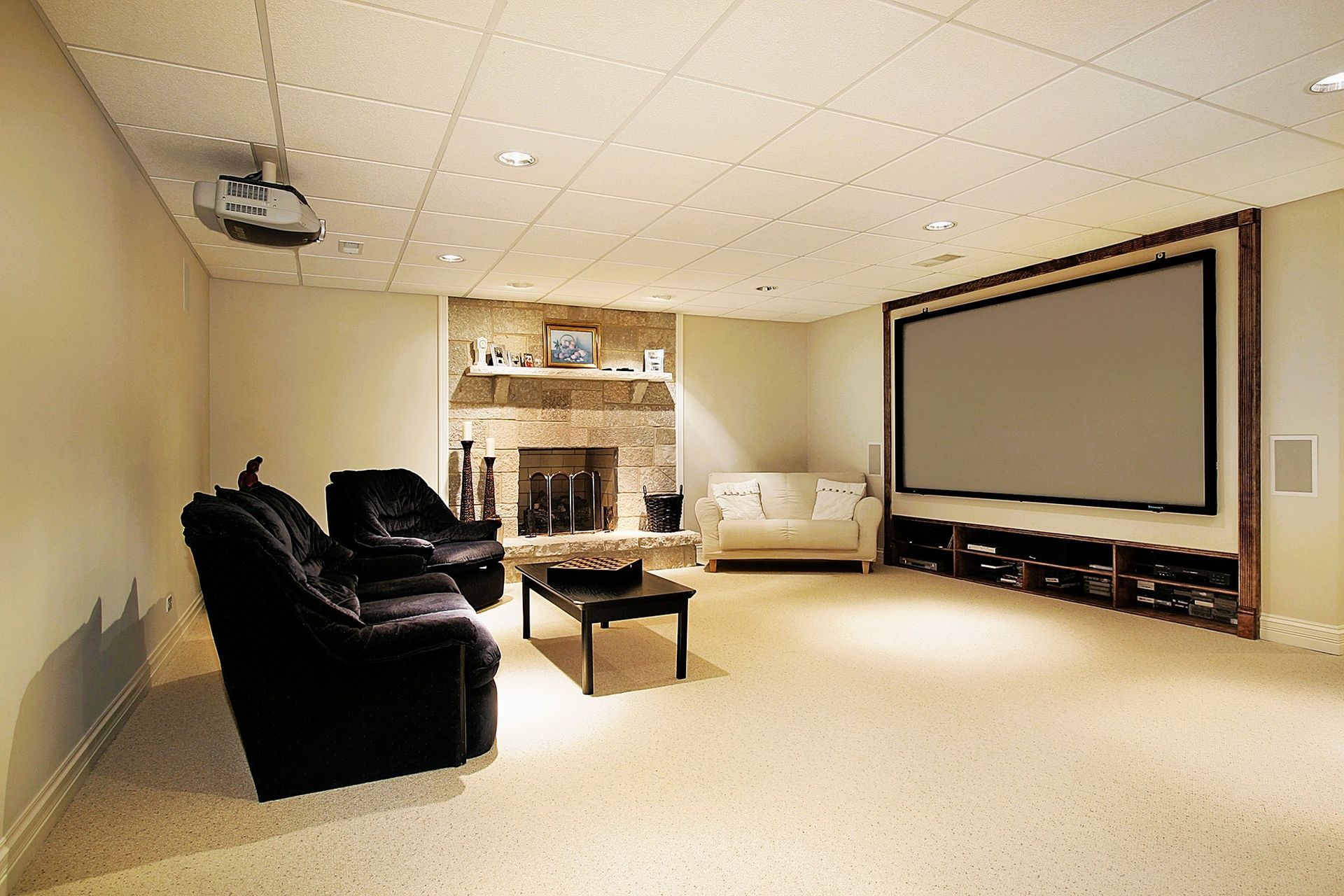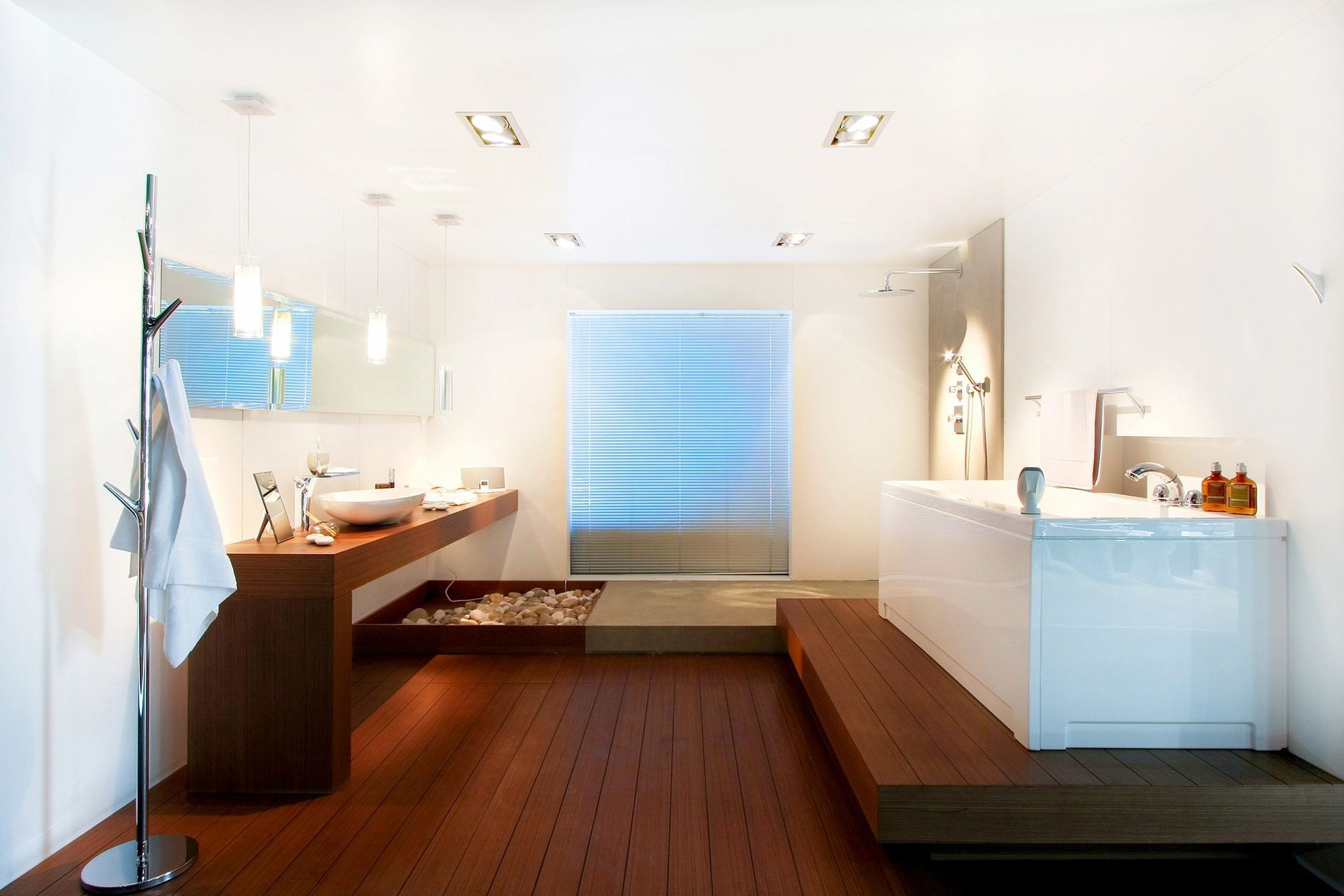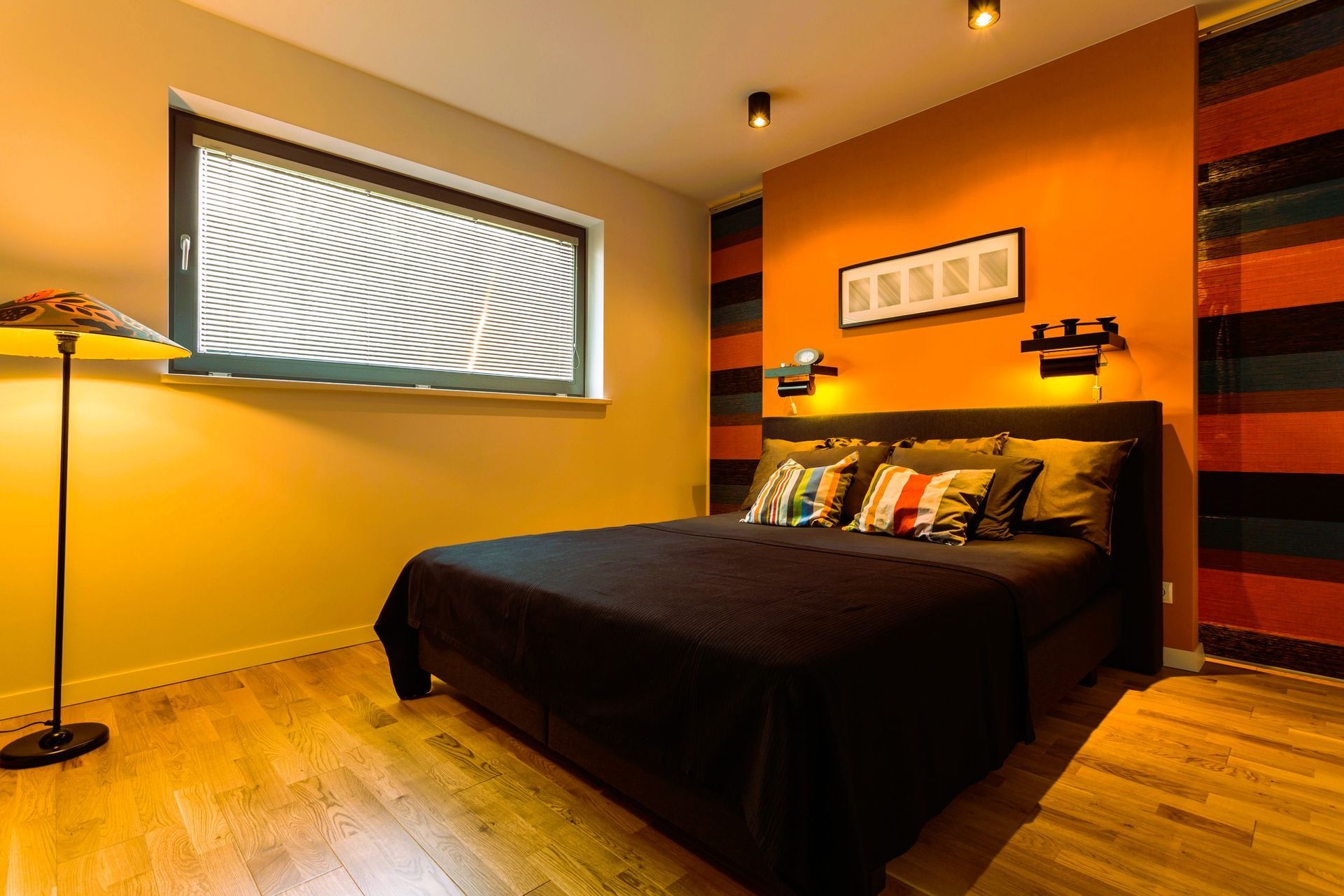6 Common Basement Finishing Mistakes and How to Avoid Them
How to avoid common mistakes when finishing your basement
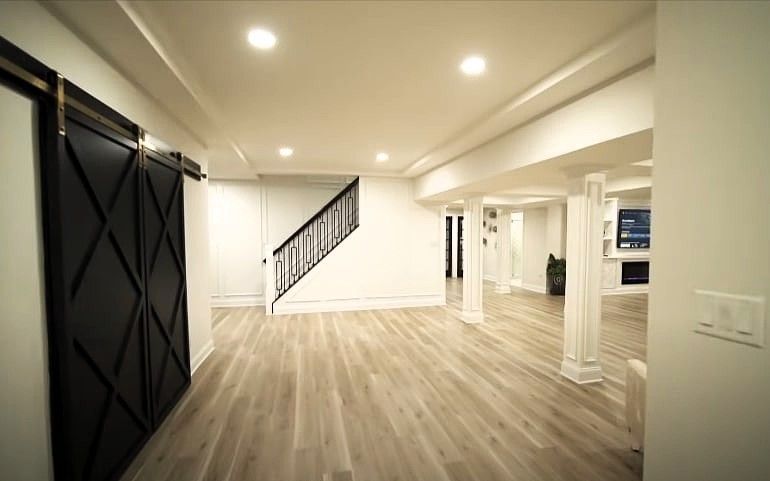
Transforming your basement into a finished space is an exciting opportunity to expand your home’s usable living area. Whether you’re envisioning a cozy family retreat, a stylish guest suite, or a top-tier entertainment room, a well-planned renovation can turn an often-overlooked area into one of your favorite spaces.
But here’s the challenge—basements come with their own unique set of obstacles. If you’re not careful, a few common mistakes can lead to costly repairs, awkward layouts, or a space that just doesn’t feel right. The good news? With a little planning and some expert insight, you can avoid these pitfalls and create a basement that’s both beautiful and functional.
1. Overlooking the Staircase
Your basement’s staircase isn’t just a way to get downstairs—it’s the first impression of your newly finished space. Yet, many homeowners treat it as an afterthought, leaving it cramped, steep, or awkwardly positioned. A poorly designed staircase can make your basement feel disconnected from the rest of your home, or worse, unsafe.
How to improve it:
- If possible, widen the stairwell to create a more open and inviting entryway.
- Upgrade to sturdy, stylish handrails for both safety and aesthetics.
- Consider adding landings or a curved design for a smoother, more natural flow.
A well-designed staircase sets the tone for your basement and makes it feel like a true extension of your home rather than an afterthought.
2. Ignoring Drainage and Waterproofing
Basements and moisture don’t mix. In areas prone to heavy rainfall, a lack of proper drainage can lead to mold, mildew, or even major flooding—turning your dream renovation into a nightmare.
How to protect your investment:
- Install a sump pump to keep water out before it becomes a problem.
- Add exterior drainage solutions like French drains or extend your downspouts to keep water flowing away from your home’s foundation.
- Invest in professional waterproofing to seal out moisture and prevent future damage.
By tackling these steps ahead of construction, you can avoid costly repairs down the road and keep your basement dry and cozy no matter the season.
3. Poor Floor Plan Design
A basement should feel like an extension of your home, not a collection of small, awkward rooms. Too many walls, misplaced ductwork, or an inefficient layout can make the space feel cramped and disjointed.
How to create a functional, open design:
- Designate specific zones for different uses, such as a TV area, a play space, or a reading nook.
- Keep mechanical systems concealed but accessible for maintenance.
- Go for an open-concept design to create better flow and make your space feel bigger and more inviting.
A well-thought-out floor plan transforms your basement from a forgotten storage space into an inviting and practical living area.
4. Choosing the Wrong Materials
Even in basements without visible water issues, humidity levels tend to be higher than in the rest of the house. Using materials that aren’t designed to handle moisture—such as untreated wood or standard drywall—can lead to warping, mold, and costly repairs down the road.
What to avoid:
- Standard drywall tends to soak up moisture, creating the perfect environment for mold to grow.
- Masonite or particle board, which deteriorate in humid conditions.
- Hardwood flooring, which can warp over time.
Better alternatives:
- Moisture-resistant gypsum board or cement board for walls.
- Water-resistant insulation to prevent mold buildup.
- Sturdy flooring choices like tile, luxury vinyl, or engineered wood—perfect for standing up to a bit of moisture now and then.
Investing in moisture-resistant materials from the start ensures that your basement remains in great condition for years to come.
5. Insufficient Lighting
Designing a basement comes with its own set of challenges, and one of the toughest is working with little to no natural light. Relying on just a couple of overhead lights can leave the space feeling dim and far from inviting. The right lighting strategy, however, can completely transform the atmosphere.
Creative ways to bring light and life to your basement:
- Add recessed lighting with dimmer switches to effortlessly set the perfect mood for any occasion.
- Incorporate wall sconces or pendant lights to add warmth and visual interest.
- Place mirrors thoughtfully to bounce natural light around and brighten up your space.
- Let natural light shine in by keeping your window treatments simple and unobtrusive.
A well-lit basement feels inviting, comfortable, and just as welcoming as any other part of your home.
6. Forgetting Soundproofing
If your basement will double as a home theater, playroom, or guest suite, noise control is essential. Without proper soundproofing, everyday household noise—from footsteps above to the hum of appliances—can quickly make the space less enjoyable.
How to minimize noise transfer:
- Install sound-absorbing insulation in walls and ceilings to reduce noise from above.
- Use thick underlayment or carpet to muffle sound.
- Add acoustic panels, fabric wall art, or even heavy curtains to help absorb excess noise.
Taking these simple steps ensures that your basement is a peaceful retreat, whether you're watching movies, hosting guests, or just unwinding after a long day.
Create Your Dream Basement with Expert Help
Transforming your basement can be one of the most exciting and fulfilling home upgrades—it's all about nailing the details. By planning ahead, choosing the right materials, and addressing common problem areas like lighting, drainage, and noise control, you can create a space that adds both comfort and value to your home.
If you’re looking for expert guidance, Grand Rapids Basement Pros specializes in designing and finishing basements that are stylish, functional, and built to last.
Get in touch with us today to kickstart your dream basement makeover—let’s turn that vision into reality together!

